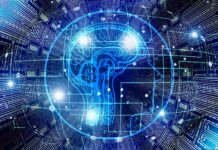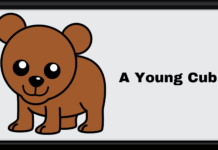From the birth of a baby, it is immunized against various diseases in different ways through an important advancement in the world of medicine. If you guessed ‘vaccine’, you’re right! In these times, we hear the word ‘vaccine’ many times in newspapers or on news channels a thousand times. The vaccine to COVID-19 may be the greatest thing since sliced bread in these times to the world. But, one may think about how the world would manage if this single shot of weakened microbes hadn’t been discovered.
History of vaccines
Vaccination was discovered by Edward Jenner who was a surgeon of English origin and Louis Pasteur, who was a French biologist. But the history of vaccinations doesn’t start here! In the 1000th century CE, inoculation was practiced in China and India to protect people against a disease known as smallpox. Also, the first vaccine to be developed was a smallpox vaccine! Coming back to inoculation, people used to grind a smallpox scab and then blow it into one’s nostril. They could have also scratched a smallpox scab into a healthy person’s skin. Slaves from Africa introduced variolation — named after the variola virus which causes smallpox — to America. Variolation only referred to inoculation with the variola virus, hence it was named so. But it also had its cons. Since variolation was the method during which matter from an infected person or from an individual who was recently variolated was used to immunize people against smallpox, there was the risk of the patient dying. Also, the mild form of smallpox that the patient contracted could be contracted by other people, which could cause a major problem like an outbreak. King George III, who was the king of Great Britain at the time, lost his 13th child, Prince Octavius, due to this process. Variolation was documented first in America in 1706 in Boston. Cotton Mather, a minister, heard of this procedure from his slave Onesimus. The former enforced this method during an epidemic of smallpox in Boston, but people like William Douglass — an American physician — opposed this idea. People also debated on the topic of variolation being iniquitous. Some people believed that variation was sinful because of it not being cited in the Bible (their main religion was Christianity). It was also seen as an insult to God who maintained the connate right to decide a person’s death. Many people believed that smallpox was a way to punish people who sinned by them contracting the disease. But, despite these relentless statements, Cotton had many supporters, among whom was Zabdiel Boylston, a surgeon. He was the one who convinced Cotton to encourage this process of protecting people against smallpox. With the former’s support, Zabdiel variolated 300 patients. Only six patients died after being variolated. In 1775, George Washington — then Commander in Chief of the Continental Army — dictated that the Continental Army must be variolated. Variolation became a trusted process in large cities and towns in the USA by the end of the American Revolution. Variolation was practiced in Sudan till the late 19th century, where it was known as “buying the smallpox”. To supposedly immunize children against these diseases, children were exposed to diseases like the flu, chickenpox, etc. in events known as “Pox parties” (for chickenpox) and “flu parties” (for the flu). It was believed that when children contracted diseases, it was less dangerous and in a milder form, compared to when adults con/tract the same disease. Sometimes, infectious materials were also shipped to expose them to diseases. Fortunately, many countries ban the shipping of infectious materials. In 1765, Doctor John Fewster published a paper titled ‘Cowpox and its ability to prevent smallpox’ in the London Medical Society. But, he didn’t pursue it further. In the year 1770, approximately 5 investigators from England and Germany tested a cowpox vaccine to protect against smallpox which proved fruitful. It is believed that Edward Jenner (discoverer of vaccines) was aware of this. But the procedure became understood 20 tears after Edward’s work. Jenner had heard about milkmaids who were immune to smallpox after contracting cowpox. He theorized that material from cowpox could be used to inoculate people to protect them from smallpox. He found a young milkmaid whose name was Sarah Nelms who had cowpox lesions on her arms. He used material from her lesions to inoculate a young boy called James Phipps. Later on, he developed mild fever, and nine days after the inoculation, he lost his appetite and felt cold at times. Fortunately, he felt better the next day. After one month, Jenner inoculated him with matter from smallpox lesions. James didn’t develop smallpox and Jenner decided that the procedure worked. He decided that this new procedure would be called vaccination (since ‘vaccinia’ was the Latin word for cowpox).
How Vaccines work
First, we need to understand how the immune system works if we want to know how a vaccine works. When a germ enters the body, the immune system recognizes it as a foreign substance and produces substances called antibodies which destroy the germs. Most of the time, our immune system doesn’t react fast enough to destroy the germ. It remembers the germ and how to destroy it. If the body is exposed to the same germ, the immune system is then able to destroy it before it can infect us. Vaccines contain a weakened version of the real germ or part of the germ(antigens). For example, a rubella vaccine could either contain a weakened version of itself or it may contain a mixture of vaccines such as combining it with measles and mumps vaccine or measles, mumps, and varicella (chickenpox) vaccine. The immune system continues the same process it does for the real germ which is how we are protected from the same disease.
Controversies regarding vaccines
When Jenner introduced vaccination, some people didn’t approve of his ideas. Some people objected to this idea since the material used to inoculate people came from animals and believed it to be unchristian. But perhaps the most famous controversy against vaccination is the belief that vaccines caused autism. On 28 February 1998, Doctor Andrew Bakefield who was a British gastroenterologist (a doctor who treats problems related to the digestive system), along with his colleagues published a scientific paper which described eight children who showed signs one month after receiving an MMR vaccine (Measles, Mumps, and Rubella vaccine). But this claim was soon refuted by scientists.
Mankind can thank all the people involved in the discovery of vaccination, can’t they?
By Sanjana Reddy
















